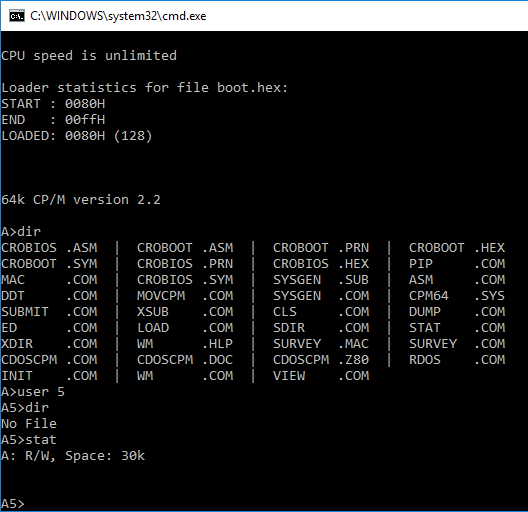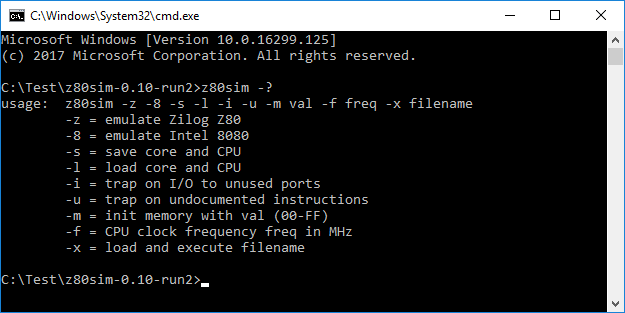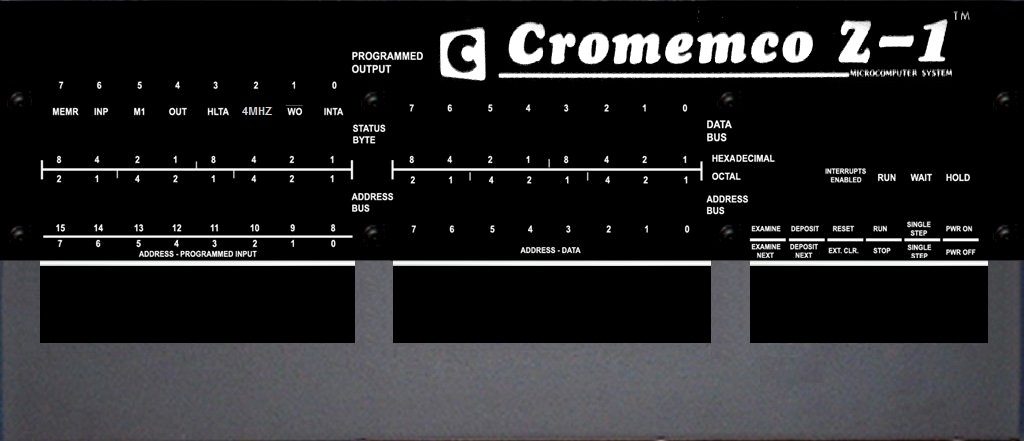You’ll never see a shorter wait loop than this one. Continue reading HP-21 Wait Loop
Category Archives: articles
HP-29C Flashing Dot
When I first built a microcode emulator for the HP-29C, it came up with a flashing decimal point. I didn’t remember this being the case with the real thing; but that was a long time ago and I might have forgotten.
I had a vague feeling there was something about low power and a flashing dot. Perhaps it normally flashes but doesn’t if power is low. All of the earlier (“classic”) calculators had hardware driven low power indicators, and I didn’t have any hardware in the emulator for that, so the normal behaviour must be a flashing decimal point.
My daughter said, “it makes more sense for the dot to flash during low power as the consumption would be slightly less”. That’s where all of my thinking started unraveling. Continue reading HP-29C Flashing Dot
HP-29C Error Routine
Here’s how “Error” gets displayed by the HP-29C. Continue reading HP-29C Error Routine
HP-29C Wait Loop
Calculators often sit in loops waiting for their person to do something. The HP-29C is no exception. Here’s what happens. Continue reading HP-29C Wait Loop
The New Calculator Debuggers
The Windows calculator emulators, hp29w and hp67w, come with the same advanced features as the HTML5 microcode versions did. They just work a little differently and there are some additional features. Continue reading The New Calculator Debuggers
Using the Windows Calculators
I’ve recently released two Windows-based calculator emulators: the hp29w and the hp67w:
![]()
![]()
They’re both pretty easy to use and fairly intuitive, but I do want to cover off some of the finer points. Continue reading Using the Windows Calculators
Continuous Memory Error
Hewlett-Packard produced calculators in the late 1970s which came with “Continuous Memory”. This retained programs and data in the calculator even when it was switched off. Continue reading Continuous Memory Error
HP-29 Scan Codes
A calculator keyboard gets scanned to see which, if any, key has been pressed.
It is a fairly simple process. The calculator activates each keyboard row in turn, and checks to see if a signal appears in any of the columns. Each key connects a different row to a different column. It looks like this: Continue reading HP-29 Scan Codes
HP-67 Card Reader Revisited
There are some interesting parallels between how the HP-65 card reader works and the new CRC instructions in the HP-67. There seems to be a bit more to it than we’ve heard before Continue reading HP-67 Card Reader Revisited
Using CCPZ
CCPZ is like CP/M, with bonuses. Underneath what you see is a standard CP/M installation but sitting above it is an improved interface. After people used CP/M for a while, they made some improvements. This is the story of one of those. Continue reading Using CCPZ
z80sim Clock Speed
The z80sim program always had a command line option to set clock speed. I can’t say that I expected it to work though. That’s not a comment on Udo, who wrote and maintains the original software. It’s a comment on things that got removed by me when I did the Windows build. There were a number of things using very nicely written unix timers that were never going to work in a pure Windows environment. (I’m told that cygwin adds all of the needed unix support – a great plus – but there seems to be a lot of it to download, install and configure; a bit of a minus.)
To my surprise, despite what I’d initially removed to get z80sim running, the -f option for CPU frequency works just fine. Continue reading z80sim Clock Speed
z80sim and Front Panel
The z80sim program had a Front Panel before I got to it and cut things out to get it running on basic Windows. The picture above is what the front of a Cromemco Z1 computer looks like. I think it was taken by Udo. It is included in the files distributed as part of his z80pack and it is believed to be covered by the pack’s open source license. There is a story that one of his images ended up, uncredited, on a commercial poster site; so I’m specifically mentioning credit here. Continue reading z80sim and Front Panel
Spending 15 Minutes in a Microsecond
Debugging real-time systems is difficult. The real world happens while you’re trying to understand what the CPU is thinking in a moment. Interrupts happen. Data arrives. Buffers empty and need refilling. The simple act of stepping the CPU through its process changes the process.
What if you could slow the real world down too and spend 15 minutes inside a microsecond? Continue reading Spending 15 Minutes in a Microsecond
CpmFS Version 0.04
It’s bigger. It’s better. It’s cooler. Here’s why … Continue reading CpmFS Version 0.04
The CDOS 2.58 Boot Sector
I recently did an article on the Cromix Boot sector to show how it adapts to the disk type. However, it didn’t. So, here’s the same article again, but with CDOS 2.58 – which does. Continue reading The CDOS 2.58 Boot Sector
The Cromix Boot Sector
Here’s what the Cromix boot sector (for Cromix 11.27) looks like and why … Continue reading The Cromix Boot Sector
z80sim Hard Breakpoints
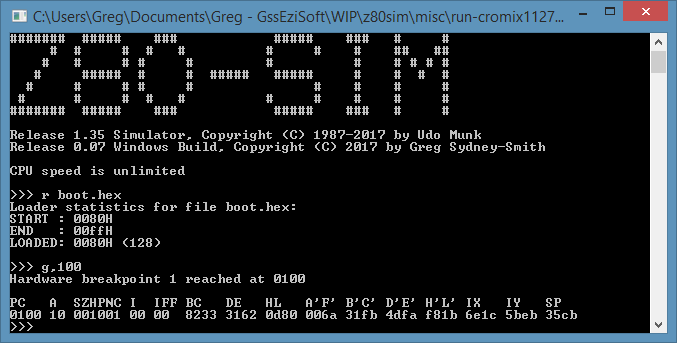
The z80sim by Udo Munk comes with the ability to set soft breakpoints. A soft breakpoint is where an instruction is temporarily replaced with a HALT instruction and the program runs until it gets to that point. Then the emulator announces “we got to …”, puts the original instruction back, and lets the user choose what to do next. However, Continue reading z80sim Hard Breakpoints
Running Cromix on Windows
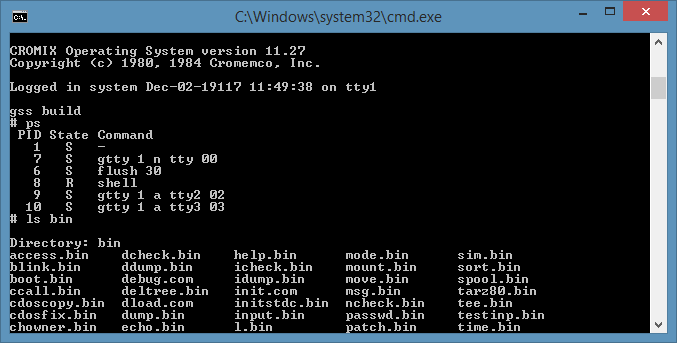
Cromix is a multi-user, multi-tasking operating system – for the Z80!
It shocked me at the time that anyone would think of such a thing, much less attempt something so clearly far beyond the realms of possibility. It can’t be done because: Continue reading Running Cromix on Windows
The SIMH Z80 Simulator
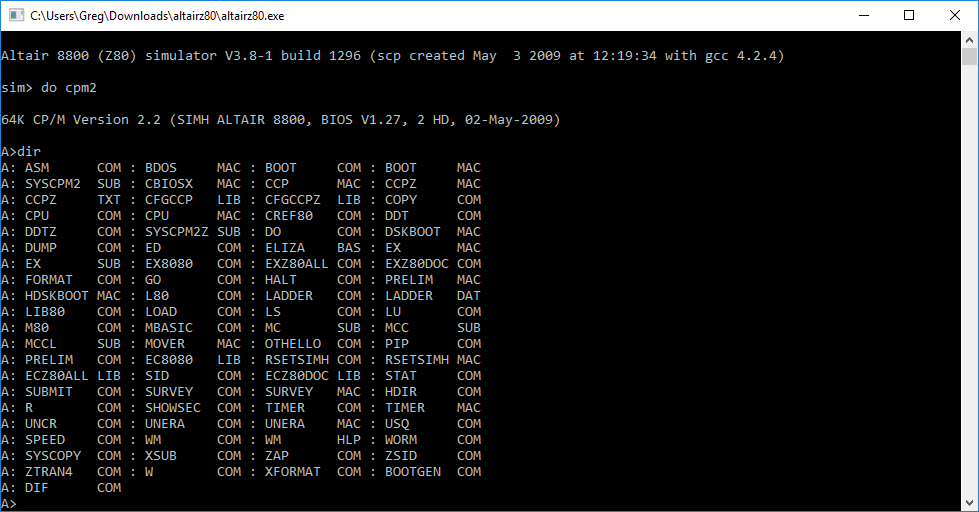
SIMH is a simulator that supports the Z80 CPU. It has great goals and a commendable history. You can find it at http://classiccmp.org/cpmarchives/cpm/mirrors/www.schorn.ch/cpm/intro.php. There are links on that page to the simulator and to a CP/M configuration. You’ll need both, even if you already have CP/M disks / images. Continue reading The SIMH Z80 Simulator
The Cromemco 256KZ Card

The Cromemco 256KZ card was an S100 bus computer card. It slotted into the card cage of an old computer and provided 256 KB of RAM for the computer.
This was surprising because, at the time, the computers using the S100 bus could only access up to 64 KB of memory. Why pay for all that extra space if you can’t use it? Here’s why … Continue reading The Cromemco 256KZ Card

